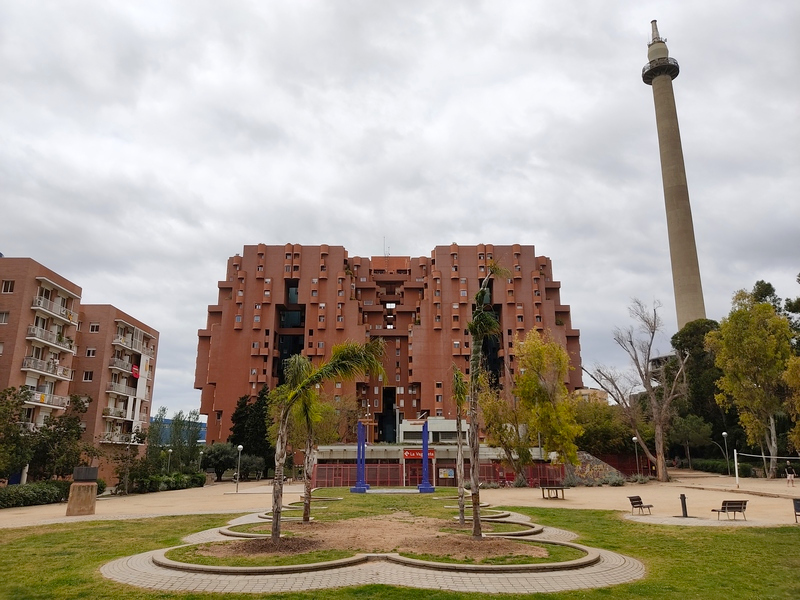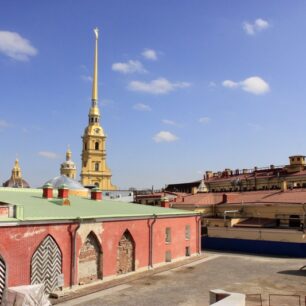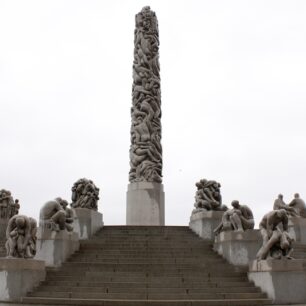Nestled in the tranquil suburb of Sant Just Desvern, just outside Barcelona, Walden 7 stands as a testament to visionary architecture and communal living. Designed by the renowned Spanish architect Ricardo Bofill and his architectural collective, Taller de Arquitectura, this iconic structure was completed in 1975. Inspired by the utopian ideals of B.F. Skinner’s novel Walden Two, the building reimagines urban living through its innovative design and communal ethos.
The Visionary Architect: Ricardo Bofill and His Collective
Ricardo Bofill (1939–2022) was a trailblazer in postmodern architecture, known for his bold and imaginative designs. After studying architecture in Geneva, he founded Taller de Arquitectura in 1963, a collective that brought together architects, artists, and thinkers to challenge conventional architectural norms. Bofill’s works often blended historical references with modernist principles, creating structures that were both functional and poetic. His projects, including Walden 7, reflect a deep commitment to social ideals and architectural innovation.
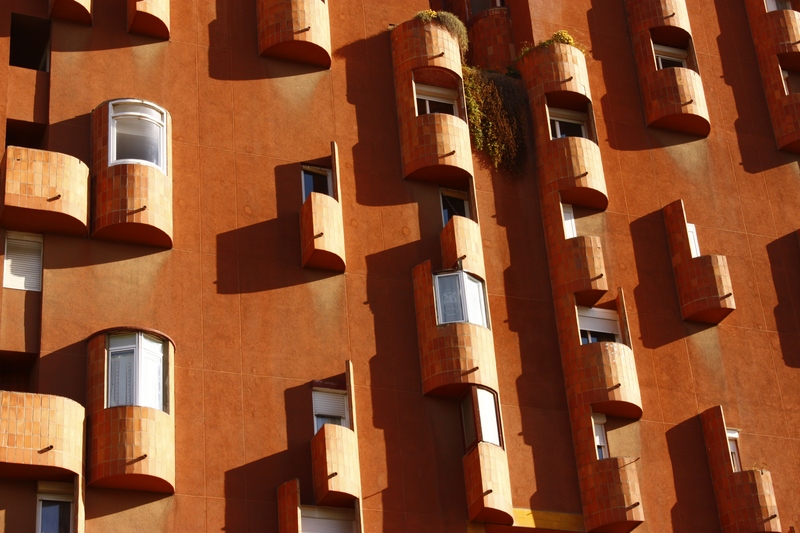
From Factory to Fantasy: The Birth of Walden 7
The site of Walden 7 was once home to a cement factory, known as La Fábrica, which Bofill transformed into his architectural studio and residence. Adjacent to this, Walden 7 was conceived as a “vertical neighborhood,” comprising 18 interconnected towers that form a labyrinthine structure with seven inner courtyards. This design aimed to foster a sense of community and interaction among residents, challenging the isolation often found in traditional apartment complexes.
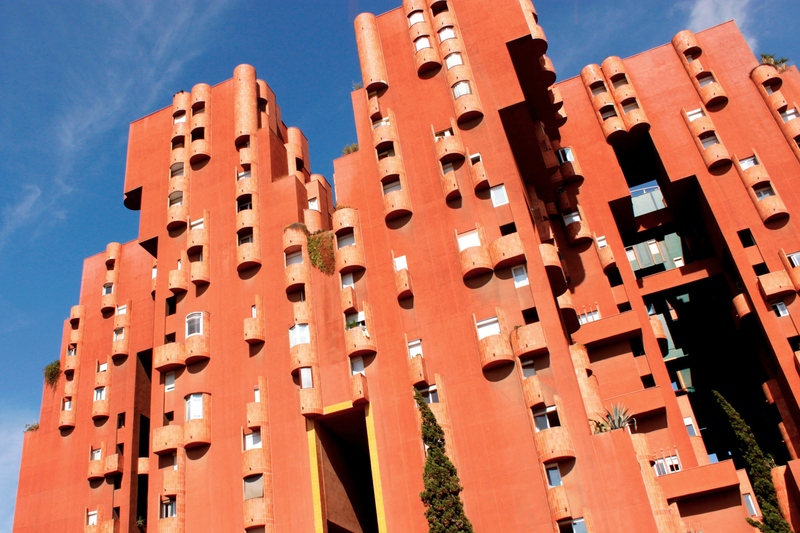
Living on the 14th Floor: A Personal Experience
Residing on the 14th floor of Walden 7 for a year offered a unique perspective on communal living. The apartment’s design creating a comfortable and airy living space. The interconnected courtyards and communal areas encouraged social interactions among residents, fostering a strong sense of community. Living in such an architecturally significant building was both inspiring and humbling, providing daily reminders of the power of thoughtful design.
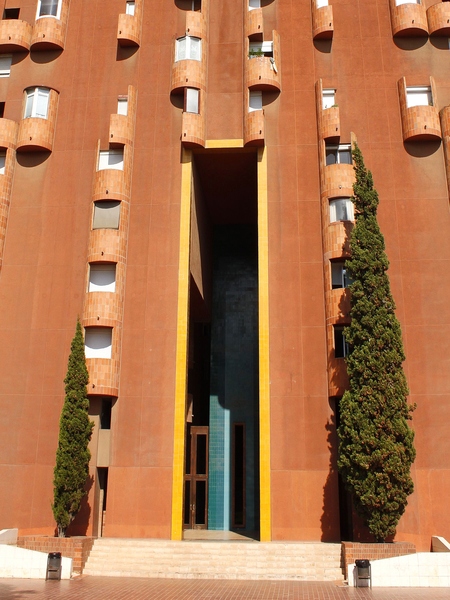
Rooftop Retreats: Pools and Sunbathing Areas
The rooftop of Walden 7 is a sanctuary for residents, featuring two swimming pools and designated sunbathing areas. One area is dedicated to nudists, offering a private space for relaxation, while the other is a grassy spot accessible to all residents. Access to these areas is secured by a key-operated elevator, ensuring privacy and exclusivity.
Walden 7 and the Utopian Ideal
The name “Walden 7” is a nod to both B.F. Skinner’s Walden Two and Henry David Thoreau’s Walden, reflecting a vision of idealized living. The building’s design embodies these utopian ideals, aiming to create a harmonious community through thoughtful architectural planning.

Bofill’s Global Architectural Footprint
Ricardo Bofill’s influence extends beyond Walden 7, with notable projects around the world. His works include La Fábrica in Barcelona, the Muralla Roja in Calpe, and the W Hotel in Barcelona. Each project showcases his unique approach to blending form, function, and social ideals, leaving a lasting impact on the architectural landscape.
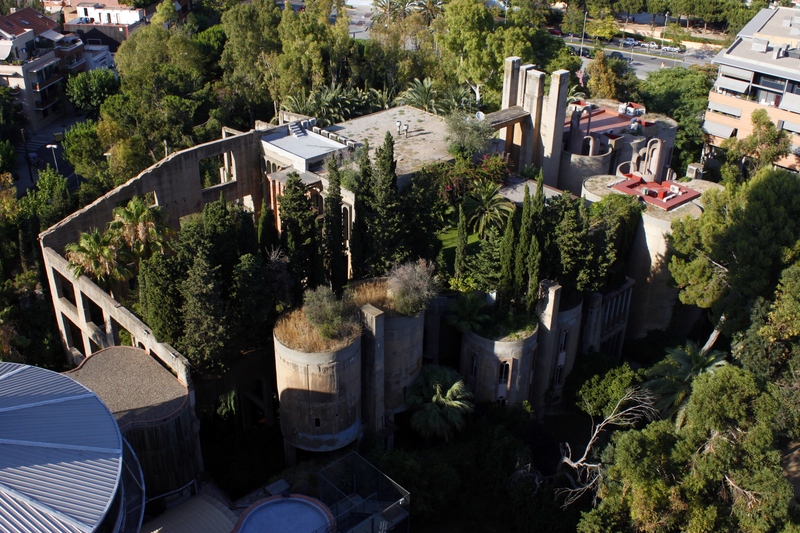
Community Amenities: Recreation and Relaxation
Walden 7 offers a range of amenities to enhance residents’ quality of life. The ground floor features a bar cafeteria, fountains, and table tennis areas, providing spaces for relaxation and socialization. Tall gates at the two entrances ensure security and privacy for residents.
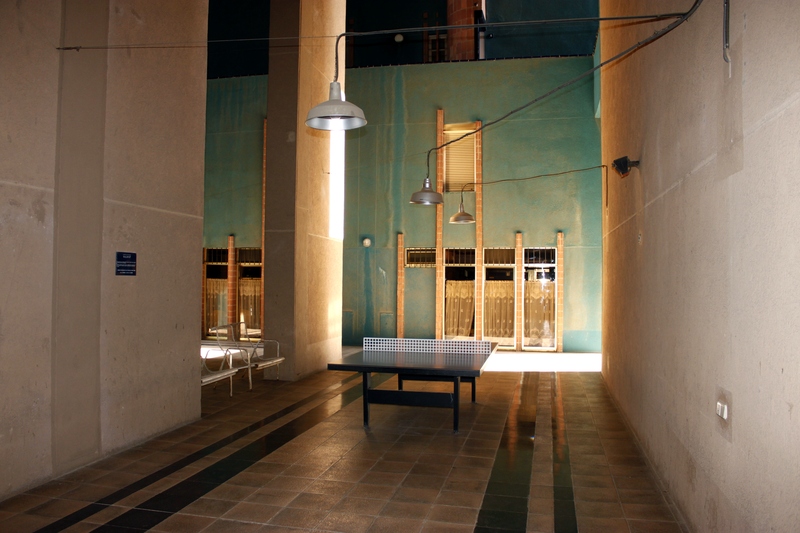
A Somber Chapter: The Building’s Dark Past
In the past, Walden 7 was known for a tragic phenomenon where individuals took their own lives by jumping from the building. This dark chapter has since been addressed through various measures, including increased security.
Also, Walden 7 has faced several maintenance challenges, one of the most notable being incidents of falling ceramic tiles from the building’s façade. The striking terracotta cladding that gives the structure its iconic appearance has occasionally loosened due to weather exposure and the natural aging of materials.
In the early 1990s, parts of the façade required restoration after some tiles detached and fell, prompting safety inspections and reinforced maintenance programs. Today, the building’s management regularly oversees preservation efforts to ensure the safety of residents and visitors while maintaining the visual integrity of Bofill’s original design. These conservation projects have become a vital part of keeping Walden 7 not just architecturally significant, but structurally sound for future generations.
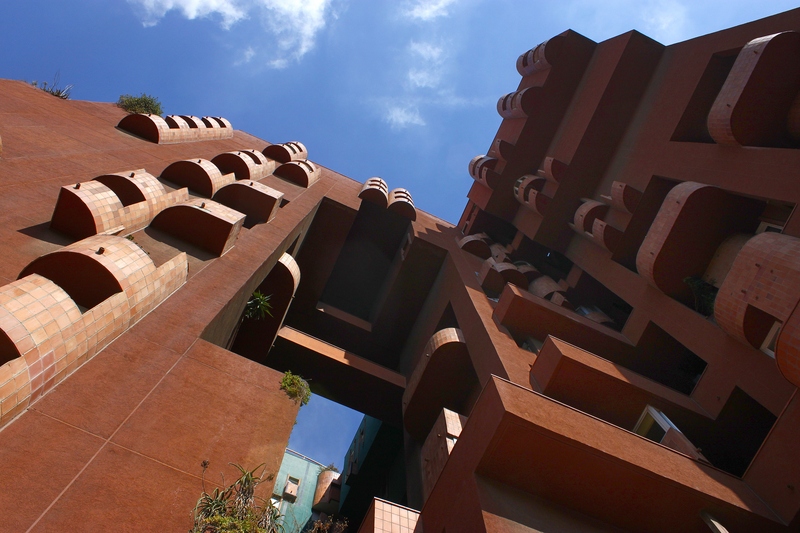
The Bofill Family and a Connection to Julio Iglesias
Ricardo Bofill’s influence extended beyond architecture — even his family found themselves woven into the cultural fabric of Spain. His eldest son, Ricardo Emilio Bofill, once married Chábeli Iglesias, the daughter of the world-famous singer Julio Iglesias and socialite Isabel Preysler. The union of these two prominent families in the early 1990s symbolized a fascinating intersection between art, architecture, and Spanish celebrity life. Although their marriage eventually ended, it remains a small yet intriguing chapter in the broader narrative of the Bofill family’s history — a reminder that even the lives of architects are sometimes as intricate and unexpected as the structures they design.
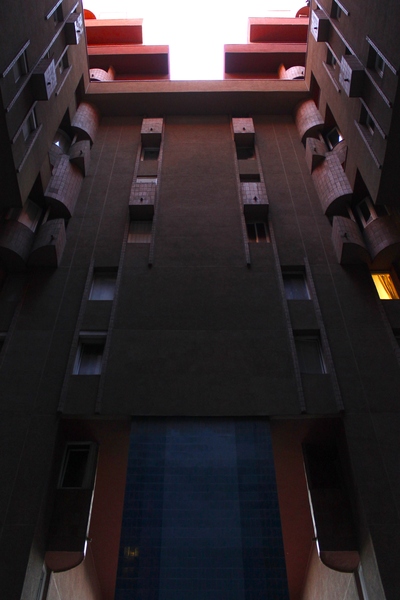
A Hub for Architectural Enthusiasts
Walden 7 continues to attract architecture students and enthusiasts from around the world. Its innovative design and communal ethos serve as a living classroom for those studying modern architecture and urban planning. The building’s unique structure and history make it a valuable resource for learning and inspiration.
Cultural Touchstones: Souvenir Shop and Library
Adding to its cultural offerings, Walden 7 houses a souvenir shop and a small library. The shop offers architectural books, prints, and other items related to Bofill’s works, while the library provides resources for residents and visitors interested in architecture and design.
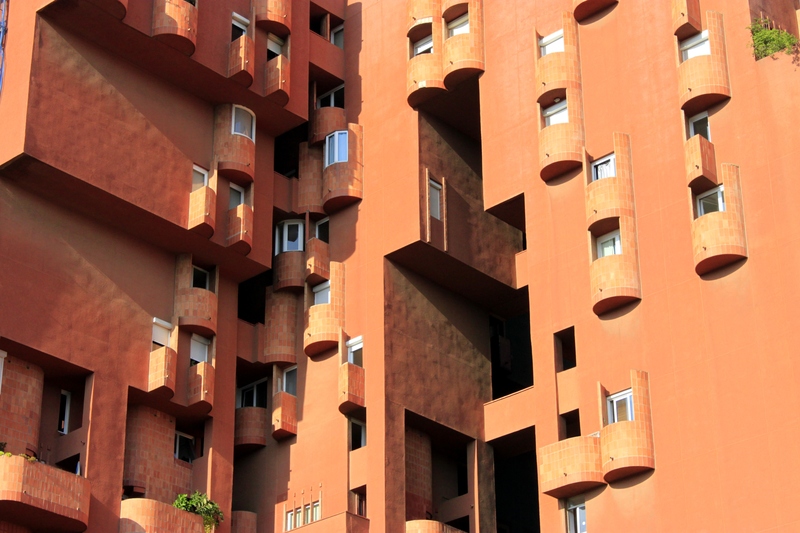
Vibrant Interiors: The Signature Blue of Walden 7
One of the most striking features of Walden 7 is its vibrant interior color palette. While the exterior boasts a warm terracotta hue, the interiors are adorned with shades of blue. These color not only create a visually stimulating environment but also contribute to the building’s unique identity. The use of such bold colors was a deliberate choice by Ricardo Bofill to evoke a sense of creativity and individuality within the communal spaces. The interplay of these colors against the backdrop of the building’s geometric design enhances the overall aesthetic appeal and reflects Bofill’s commitment to integrating art and architecture.
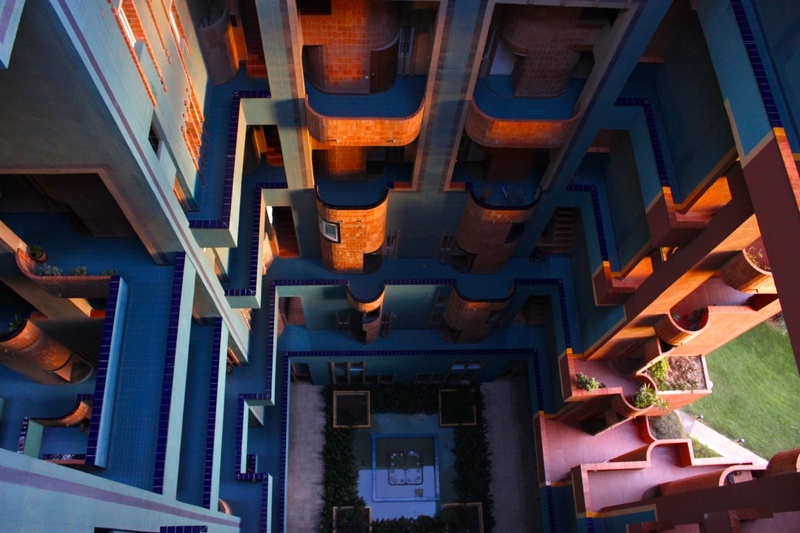
Celebrating Community: Fiestas at the Top
The residents of Walden 7 have cultivated a strong sense of community, often coming together to celebrate important fiestas. These gatherings typically take place in the rooftop areas, where the expansive space and panoramic views provide an ideal setting for communal festivities. Such events not only foster social bonds among neighbors but also highlight the building’s design as a facilitator of communal living. The rooftop spaces, with their unique architectural features, serve as a backdrop for these celebrations, blending the building’s aesthetic appeal with its social purpose.
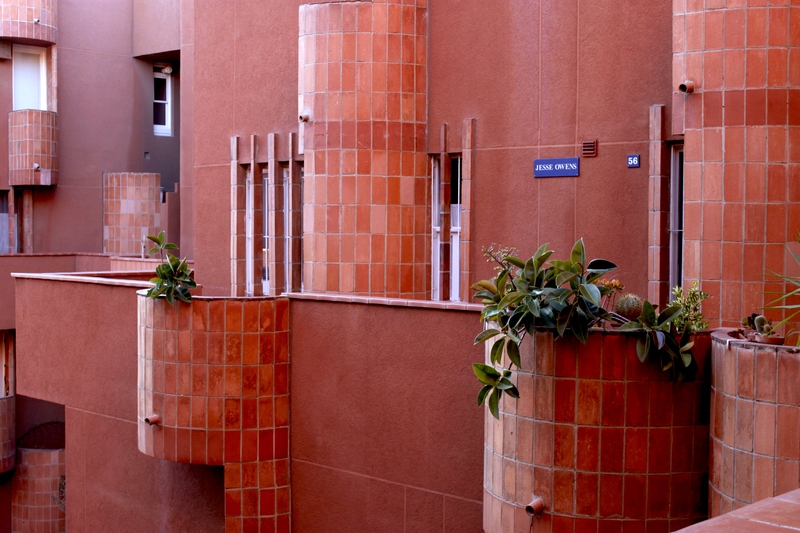
Architectural Ingenuity: Plans and Design
Walden 7 stands as a testament to architectural innovation, characterized by its labyrinthine structure and thoughtful design. The building comprises 18 interconnected towers, each offset from the one below, creating a dynamic and non-repetitive facade. This design approach not only enhances the visual interest but also allows for the incorporation of seven interior courtyards, providing residents with communal green spaces. The apartments themselves are modular, designed to adapt to the changing needs of residents over time. This flexibility is a key aspect of Bofill’s vision, aiming to create a living environment that evolves with its inhabitants.
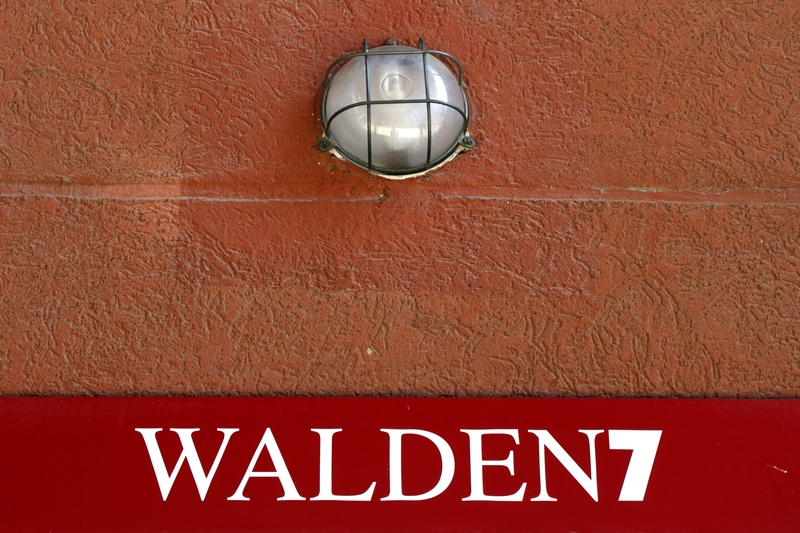
The Legacy
Ricardo Bofill’s architectural legacy did not end with him alone — his sons have played key roles in carrying forward the vision of his studio, Ricardo Bofill Taller de Arquitectura (RBTA). One of his sons, Ricardo Emilio Bofill studied architecture at Rice University in Houston and then at Harvard’s Graduate School of Design, with additional study in real-estate development at Columbia University.
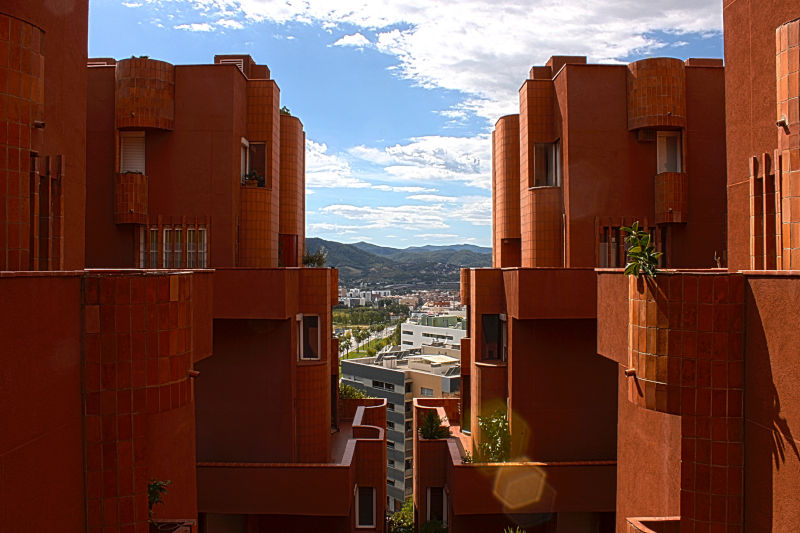
Another son, Pablo Bofill (born 1980 in Paris), studied at ESADE in Barcelona, and has taken over the studio’s leadership. He became CEO of Bofill Taller de Arquitectura in 2009.
Their involvement means that the studio remains active globally, and continues to honor the ethos of modular geometry, collective living, and the mix of engineering, art and social ambition that Ricardo Bofill himself embodied. In visiting an iconic building such as Walden 7, one is not just witnessing a historic 1970s vision, but part of a living architectural lineage being carried on by his sons and their team.
It’s also worth noting that the existence of the sons and their active roles lends a deeper sense of continuity to the project: the building you lived in for a year is not just a standalone piece of architecture, but part of a broader story of family, studio, transformation and legacy.


